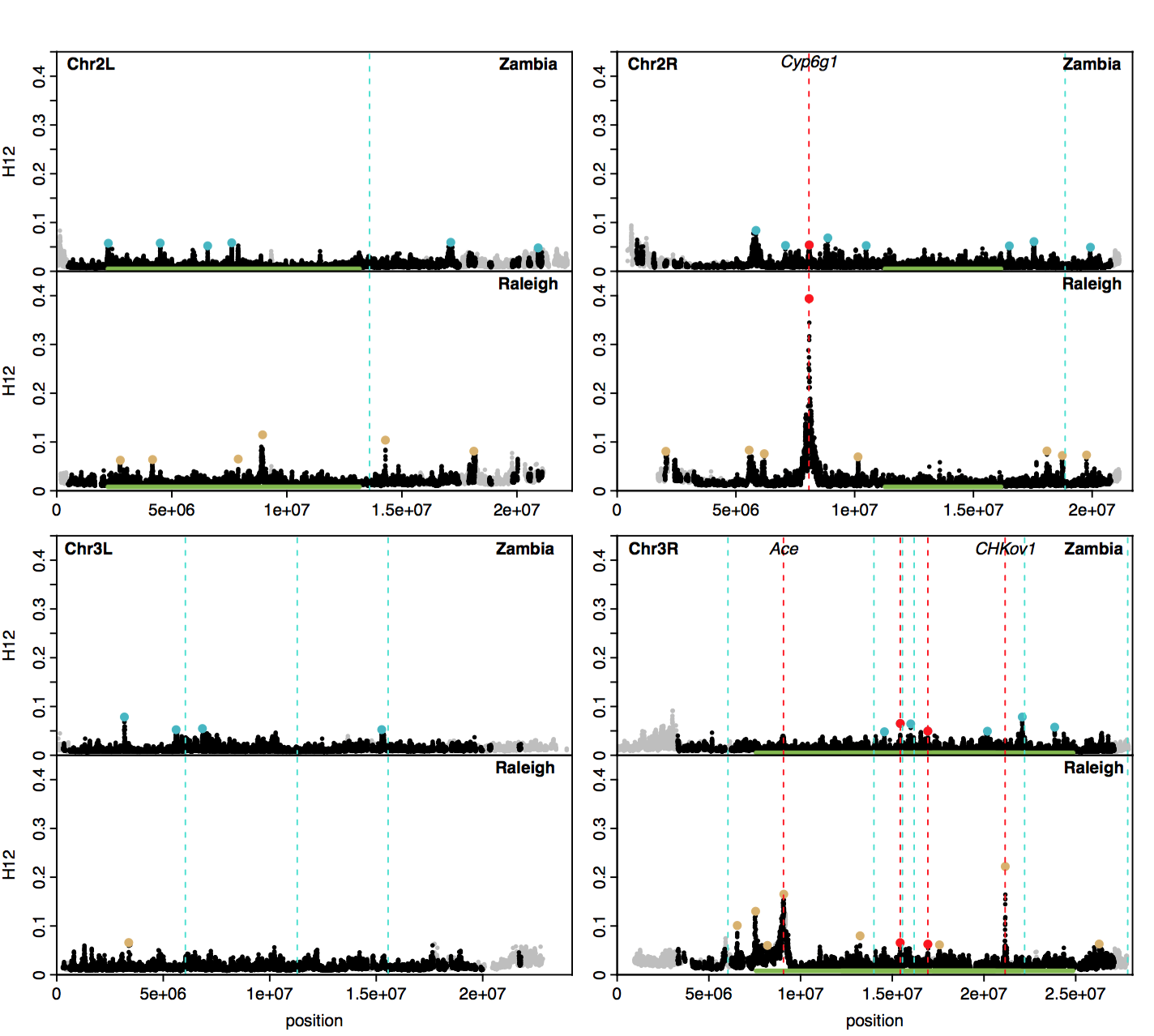Gladstone Career Advancement Award
I am honored to receive the Gladstone Institutes Career Advancement Award.
I am honored to receive the Gladstone Institutes Career Advancement Award.
I recently posted a preprint of my work with Benjamin Good, Oskar Hallatschek, and Katherine Pollard on the evolutionary dynamics of bacteria in the gut microbiome within and across hosts on BioRxiv. In this paper, we use a model-based approach to analyze shotgun metagenomic data to reveal evolutionary forces that operate in the gut microbiome. We offer empirical evidence that gut bacteria evolve within healthy human hosts, and we find that between-host genealogical patterns challenge existing population genetic models of quasi-sexual evolution.
We welcome your feedback on the paper.
I recently gave an outreach talk at the California Academy of Sciences Women in Science Nightlife event on why understanding evolution in the human gut microbiome is important for connecting the microbiome to our health.
I will be co-chairing a symposium at the 2017 Society for Molecular Biology and Evolution in Austin TX with my colleague, Sharon Greenblum, on ‘Probing microbiome dynamics.’ We look forward to receiving abstracts on how evolutionary and ecological forces have shaped diversity in the microbiome.
Symposium abstract:
Microbiomes are comprised of many bacterial species with complex interactions and dependencies between community members. Adaptation of microbiomes to rapidly fluctuating environments can result in changes in species diversity and composition, as has been observed in patients with Crohn’s disease and asthma. Individual species within the microbiome experience adaptation too, as evidenced by single-species studies of adaptation in response to specific conditions, for example the evolution of Burkholderia dolosa over the course of an outbreak, or the virulent transformations of E. coli in response to nutrient limi-tation. How these strain-level dynamics play out in a community setting, and what the strain-level signatures of adaptation are in the microbiome, remain open questions. Only recent technological breakthroughs have provided the means to leverage metagenomic data to understand signatures of adaptation at the strain level, such as single nucleotide polymorphisms and gene copy number variants. Such information will illuminate the evolutionary forces shaping microbiome diversity, transforming in turn our ability to manipulate the microbiome to benefit host health. This symposium will focus on probing signatures of adaptation in the microbiome, with special attention paid to novel data sources, statistical methodology, and biological examples.
Recently, my colleague asked if adaptive TEs overlap with the top H12 peaks identified in Raleigh or Zambian D. melanogaster data. A paper by Gonzelez et al. 2010 shortlisted 13 adaptive TE candidates in D. melanogaster. One of the candidates is at the locus CHKoV1, which has been experimentally validated to confer resistance to pesticides.
Below I am replicating a figure from my paper showing an H12 scan in both Zambian and Raleigh D. melanogaster populations. The peaks highlighted with blue and beige dots indicate positions of the top 25 H12 peaks in the Zambian and Raleigh scans, respectively. I highlighted with red vertical lines the positions of three positive controls, Cyp6g1 (at this locus another TE confers DDT resistance, see this paper), Ace, and CHKoV1. Two additional red lines highlight peaks that are shared in both populations at unidentified loci. Additionally, I highlighted with blue vertical lines the positions of the candidates that Gonzalez et al. identified. Gonzalez et al. also identified candidates on the X chromosome, but we did not include an analysis of the X in our paper. As can be seen, the main overlap is at the CHKov1 locus. There are close overlaps at a peak on Chr2R in Raleigh and a couple peaks on Chr3R in Zambia, but it is difficult to know for sure if these are true overlaps given that the peaks are shifted slightly relative to the loci of the genes in which the TEs are located.

Last week I had the opportunity to present at the ‘Promoting Inclusivity in Computing (PINC)‘ program at the San Francisco State University, hosted by Dr. Pleuni Pennings. I spoke about why computing is useful and necessary in analyzing metagenomic data. I had a chance to meet the students in small groups to answer their questions about computer science in biology and job opportunities for programmers. I really enjoyed my time at SFSU!
I’m looking forward to attending two meetings this week: Bay Area Population Genetics, hosted by San Francisco State University, and the Lake Arrowhead Microbial Genetics conference hosted by UCLA.
A paper I recently contributed to is now accepted at Genome Research:
My paper with Dmitri Petrov on Elevation of linkage disequilibrium above neutral expectations in ancestral and derived population of Drosophila melanogaster is accepted at Genetics. In this paper we show that signatures of soft sweeps are common to multiple populations of D. melanogaster.
In our previous paper in PLoS Genetics, we showed that soft sweeps are common in the Raleigh population of D. melanogaster. However, there were many questions raised regarding the extent to which soft sweeps are specific to the North Carolina population we studied. There are many factors that challenge the results of the North Carolina data set which we sought to address. First, the North American flies have experienced extensive admixture, the effects of which are largely unknown on LD. Second, the Raleigh data set was generated by extensive inbreeding, which could also impact LD. Dmitri and I analyzed a sample of >100 fully sequenced strains from Zambia, an ancestral population that has experienced little to no admixture and was generated by sequencing haploid embryos rather than inbred strains. My results revealed that soft sweeps are common to both Raleigh and Zambia. In addition, in Zambia we found evidence for some hard sweeps.
A copy of our paper is available here and will be available on the Genetics website soon.
Figure 3 from our paper: Haplotype frequency spectra for the 25 H12 peaks in Zambian and Raleigh data. Shown are haplotype frequency spectra for the top 25 peaks in the Zambian H12 scan conducted in 801 SNP windows down-sampled to 401 SNPs (A) and the Raleigh H12 scan conducted in 401 SNP windows (B). For each peak, the frequency spectrum corresponding to the analysis window with the highest H12 value was plotted. The height of the upmost shaded region (light blue) in each bar indicates the frequency of the most prevalent haplotype in the sample of 145 individuals, and heights of subsequent colored bars indicate the frequency of the second, third, and so on most frequent haplotypes in a sample. Grey bars indicate singletons. In Zambia, sweeps reach a smaller partial frequency than Raleigh. Many peaks in the Zambian data have multiple haplotypes present at high frequency indicative of soft sweeps, and many peaks have a single haplotype dominating the haplotype spectra, indicative of hard sweeps. In Raleigh all sweeps have multiple haplotypes at high frequency consistent with signatures of soft sweeps.

Along with Pleuni Pennings, Ben Wilson, Alison Feder, and Zoe Assaf, I recently published a review on adaptation in pathogens in Molecular Ecology. In this review we discuss the state of the art population genetic analyses conducted in a wide array of pathogens including P. falciparum (the malaria causing pathogen), HIV, tuberculosis, Staph, and flu. Please check out our paper here.
We made short videos highlighting the different pathogens that we wrote about.
This is me discussing adaptation in P. falciparum:
Ben on influenza:
Here’s Pleuni talking about HIV:
Alison talking about tuberculosis:
And Zoe sharing work on Staphylococcus aureus:
